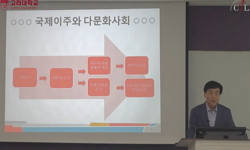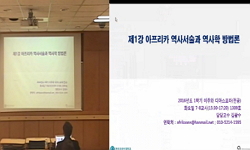This paper has been written for the ultimate end to clarify the usefulness of ``place lens`` on the study of transnational migration and network, so as to get over the limitation of methodological nationalism. The Seoul Mongol Town started to be forme...
http://chineseinput.net/에서 pinyin(병음)방식으로 중국어를 변환할 수 있습니다.
변환된 중국어를 복사하여 사용하시면 됩니다.
- 中文 을 입력하시려면 zhongwen을 입력하시고 space를누르시면됩니다.
- 北京 을 입력하시려면 beijing을 입력하시고 space를 누르시면 됩니다.

이주자의 민족경제 실천과 로컬리티의 재구성: 서울 동대문 몽골타운을 사례로 = Reconstruction of Locality by the Practice of Mongolian Migrants` Ethnic Economy at Seoul Mongol Town
한글로보기https://www.riss.kr/link?id=A101746044
- 저자
- 발행기관
- 학술지명
- 권호사항
-
발행연도
2013
-
작성언어
-
-
주제어
이주 ; 몽골타운 ; 로컬리터 ; 장소렌즈 ; 방법론적 국가주의 ; migration ; Mongol Town ; locality ; place lens ; methodological nationalism
-
KDC
300
-
등재정보
KCI등재
-
자료형태
학술저널
- 발행기관 URL
-
수록면
19-36(18쪽)
- 제공처
-
0
상세조회 -
0
다운로드
부가정보
다국어 초록 (Multilingual Abstract)
This paper has been written for the ultimate end to clarify the usefulness of ``place lens`` on the study of transnational migration and network, so as to get over the limitation of methodological nationalism. The Seoul Mongol Town started to be formed as a sojourning place by Mongolian package peddlers since the diplomatic relations established in 1993. Just neighboring the Dongdaemun Market, this place was a ``food alley`` catering to the Korean laborers, and then infiltrated by Russian migrants. Shortly thereafter in 2000 Mongolian migrants began to tremendously increase, the Mongolian migrants got together to the former Russian place, which was facilitated by the easy accessibility to the Dondaemun Market, low land value, the possibility of employment at the manufacturing companies densely accumulated near here, and the sense of fellowship with Russian culture. The building of New Kumho Tower newly erected in 2002 especially has played important roles to enable Mongolian migrants` experiences to be territorialized. For the last 10years, the trans-network of Mongolian migrants has consolidated the identity and functions of the Mongol Town, and reconstructed the new locality by connecting the existing locality of Dongdaemun to the locality of origin bake in Mongol.
동일학술지(권/호) 다른 논문
-
세계유산적 가치의 관점에서 본 산성도시 남한산성의 경관 분석
- 한국도시지리학회
- 최재헌 ( Jae Heon Choi )
- 2013
- KCI등재
-
초국가적 이주 연구의 발전과 한계: 발생학적 이해와 미래 연구 방향
- 한국도시지리학회
- 이용균 ( Yong Gyun Lee )
- 2013
- KCI등재
-
문화유산정보의 온톨로지 기반 코퍼스 생성을 통한 디지털 콘텐츠화 방안: 구 한성부의 종교건축유산을 사례로
- 한국도시지리학회
- 김희순 ( Hee Soon Kim )
- 2013
- KCI등재
-
수도권 규제완화정책에 대한 정책 네트워크 모형 적용 연구
- 한국도시지리학회
- 유병권 ( Byeong Kwon You )
- 2013
- KCI등재




 KCI
KCI KISS
KISS






